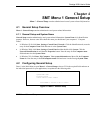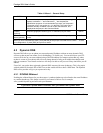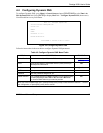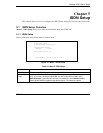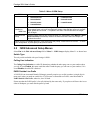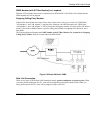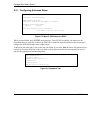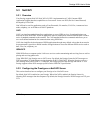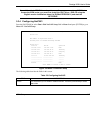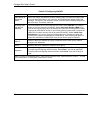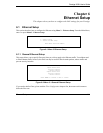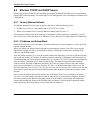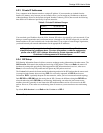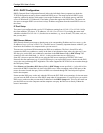
Prestige 202H User’s Guide
ISDN Setup 5-5
5.3 NetCAPI
5.3.1 Overview
Your Prestige supports NetCAPI. NetCAPI is ZyXEL's implementation of CAPI (Common ISDN
Application Program Interface) capabilities over a network. It runs over DCP (Device Control Protocol)
developed by RVS-COM.
NetCAPI can be used for applications such as Eurofile transfer, file transfer, G3/G4 Fax, Autoanswer host
mode, telephony, etc. on Windows 95/98/NT platforms.
CAPI
CAPI is an interface standard that allows applications to access ISDN services. Several applications can
share one or more ISDN lines. When an application wants to communicate with an ISDN terminal it sends a
series of standard commands to the terminal. The CAPI standard defines the commands and allows you to
use a well-defined mechanism for communications using ISDN lines.
CAPI also simplifies the development of ISDN applications through many default values that do not need to
be programmed. It provides a unified interface for applications to access the different ISDN services such as
data, voice, fax, telephony, etc.
ISDN-DCP
ISDN-DCP allows a computer on the LAN to use services such as transmitting and receiving faxes as well as
placing and receiving phone calls.
Using ISDN-DCP, the Prestige acts as a DCP server. By default, the Prestige listens for DCP messages on
TCP port number 2578 (the Internet-assigned number for RVS-COM DCP). When the Prestige receives a
DCP message from a DCP client i.e., a computer, the Prestige processes the message and acts on it. Your
Prestige supports all the DCP messages specified in the ISDN-DCP specification.
5.3.2 Configuring the Prestige as a NetCAPI Server
This section describes how to configure your Prestige to be a NetCAPI server.
By default, NetCAPI is enabled on your Prestige. When NetCAPI is enabled, the Prestige listens for
incoming DCP messages from the computers. By default, the Prestige listens for DCP messages on TCP port
2578.



